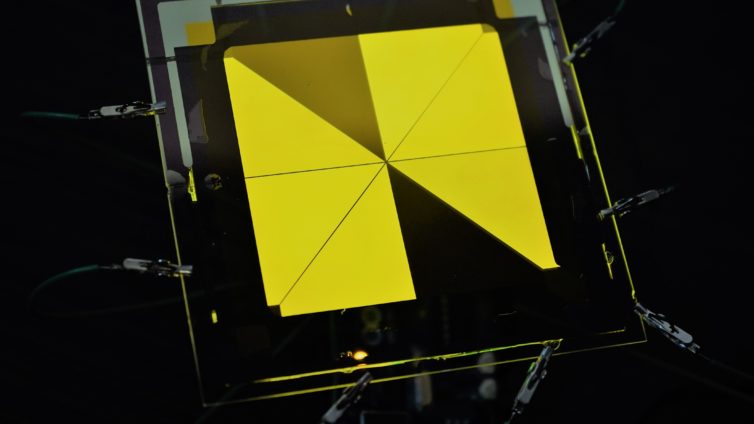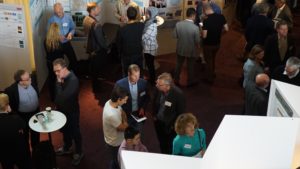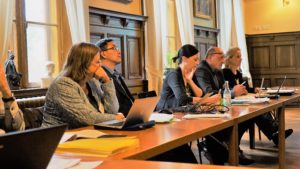
Baby blankets, e-plasters, high-speed networks and smart materials : SSF research spinns-off
Access to inexpensive and stable components is essential for a rapid development within the IT sector. Today, you can buy 20 million transistors for a dollar, explained Walter Riess, at IBM’s research lab in Zürich. In his opening lecture at the SSF Electronics and Photonics conference in Lund, 7-8 September, he painted a visionary picture of developments in computer technology.
Moving on from computing and programming, computers are now entering a phase in which they and other large systems will start to behave more like humans, gaining cognitive and self-learning properties for dealing with largely unstructured content. Applications for electronics and photonics are rapidly expanding, especially when supported by high speed networks.
Light used for healing
A small blanket with a faint, blue light that cures infantile jaundice, a light-plaster that stimulates healing, illuminated wallpaper, and super low-energy billboards. These are all examples of potential spin-offs from Ludvig Edman’s projects into so called Light-emitting Electrochemical Cells (LECs) at the universities of Umeå and Linköping.
“It is really only imagination that limits what thin and pliable LECs can be used for. Currently, the emphasis is on medical applications, but I can see many everyday applications such as illuminated vests for young children, light-emitting labels that make it easy for postal workers and others to quickly find the correct packet, or for customers to navigate supermarket shelves,” says Ludvig Edman. “At the moment we are working on scaling issues and on how to avoid using metals, for environmental reasons. We are also looking for skilful chemists to help us synthesise new materials.”
Research into organic electronics and light-emitting electrochemistry took off about 20 years ago. Qibing Pei, previously at Linköping University but presently at the University of California, (UCLA) in the US, is one of the pioneers. Together with Janelle Leger, Western Washington University, Ilona Rolfes from the Ruhr University in Bochum, and Walter Riess, he is also evaluating the SSF Programme. In order for the results of the research to be useful, Pei emphasised the importance of developing low-cost processes and materials. To increase their usefulness for many medical applications and light-emitting textiles, the materials need to be thin, elastic and flexible.
Printed electronics is the focus for Magnus Berggren’s research group at Linköping University. Just as for Ludvig Edman’s group, there are plenty of potential applications. Among them are e-bandages and e-plasters for wounds, diagnostics and monitoring systems, electronic labelling, and smarter and better sensors for use in, for instance, mobile phones.
Postersession in action
Quicker and smarter
Several of the projects, such as the one led by Anders Larsson at Chalmers, deal with optical methods for high-speed, high-frequency networks. Herbert Zirath, Chalmers, outlined solutions for wireless high-speed data communication. According to Zirath, the development of antennae and system designs, carried out jointly with Ericsson, is critical since there is a lack of standard components in the near 1THz area. Terahertz systems are also the theme for a project led by the KTH researcher Joachim Oberhammer, focusing on the development of low-cost microelectronic systems.
Mikael Östling, professor at KTH, is building a chip demonstrator for germanium-(Ge)-based 3D nanowire transistors. Using germanium instead of silicon (Si) can reduce the overall energy consumption in integrated circuits. Lars-Erik Wernersson at Lund University is also studying nanowires, but made of silicon, and his aim is to develop new methods for large-scale production using advanced transistor architectures. Johan Liu’s research group at Chalmers is developing new manufacturing strategies based on gallium nitride substrates, and utilising graphene and carbon nanotubes. Several of the SSF projects are also collaborating with each other and with industry.
Program evalutation, from left Anja Skrivervik, Qibing Pei, Janelle Leger, Walter Riess and Ilona Rolfes.
Some spin-off companies linked to the framework funding
LunaLEC (Ludvig Edman)
OptiGOT (Anders Larsson)
Gapwawes (Herbert Zirath)
C2amps, Acconeer, (Lars-Erik Wernersson)

